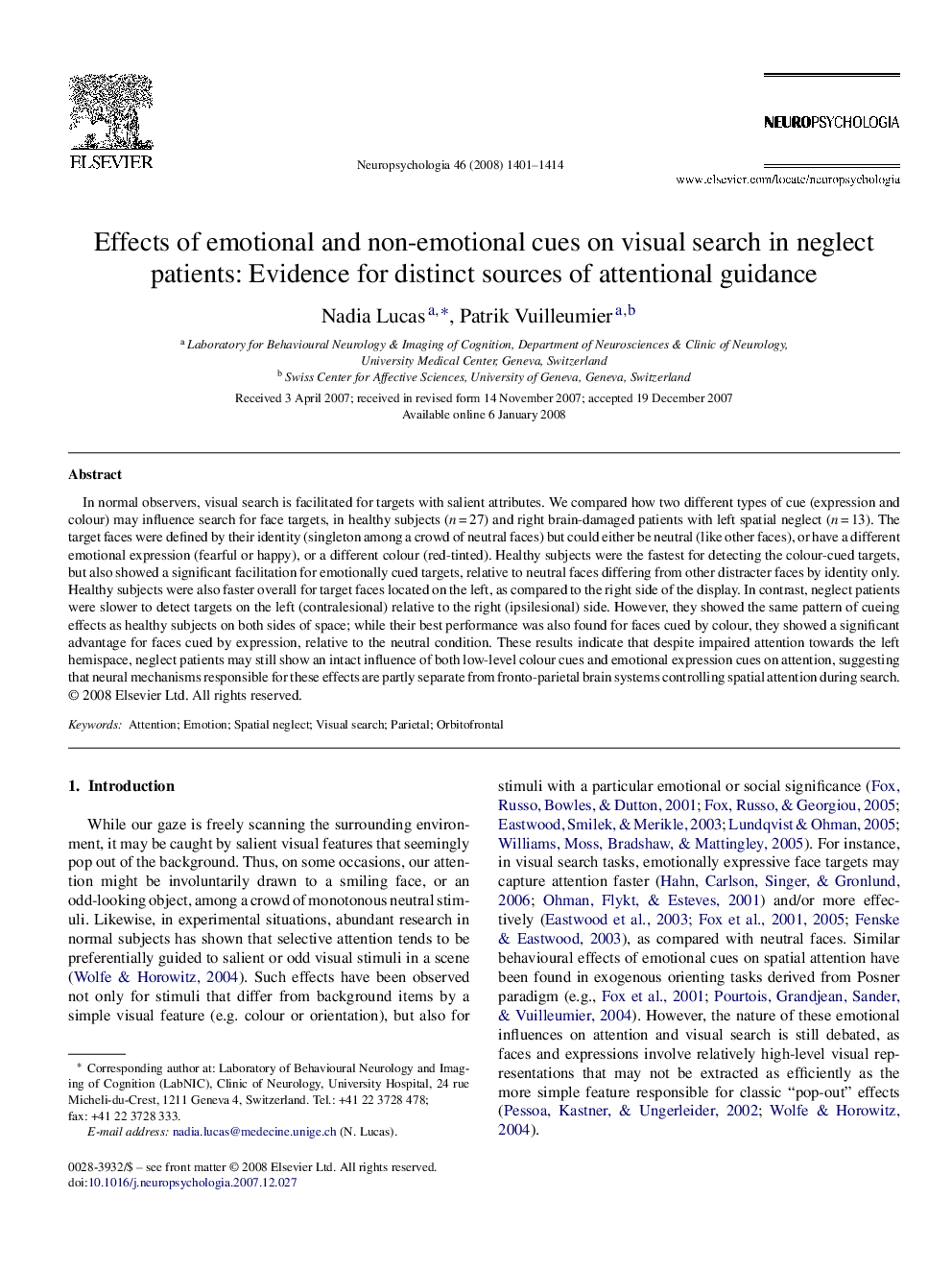| Article ID | Journal | Published Year | Pages | File Type |
|---|---|---|---|---|
| 10466829 | Neuropsychologia | 2008 | 14 Pages |
Abstract
In normal observers, visual search is facilitated for targets with salient attributes. We compared how two different types of cue (expression and colour) may influence search for face targets, in healthy subjects (n = 27) and right brain-damaged patients with left spatial neglect (n = 13). The target faces were defined by their identity (singleton among a crowd of neutral faces) but could either be neutral (like other faces), or have a different emotional expression (fearful or happy), or a different colour (red-tinted). Healthy subjects were the fastest for detecting the colour-cued targets, but also showed a significant facilitation for emotionally cued targets, relative to neutral faces differing from other distracter faces by identity only. Healthy subjects were also faster overall for target faces located on the left, as compared to the right side of the display. In contrast, neglect patients were slower to detect targets on the left (contralesional) relative to the right (ipsilesional) side. However, they showed the same pattern of cueing effects as healthy subjects on both sides of space; while their best performance was also found for faces cued by colour, they showed a significant advantage for faces cued by expression, relative to the neutral condition. These results indicate that despite impaired attention towards the left hemispace, neglect patients may still show an intact influence of both low-level colour cues and emotional expression cues on attention, suggesting that neural mechanisms responsible for these effects are partly separate from fronto-parietal brain systems controlling spatial attention during search.
Related Topics
Life Sciences
Neuroscience
Behavioral Neuroscience
Authors
Nadia Lucas, Patrik Vuilleumier,
